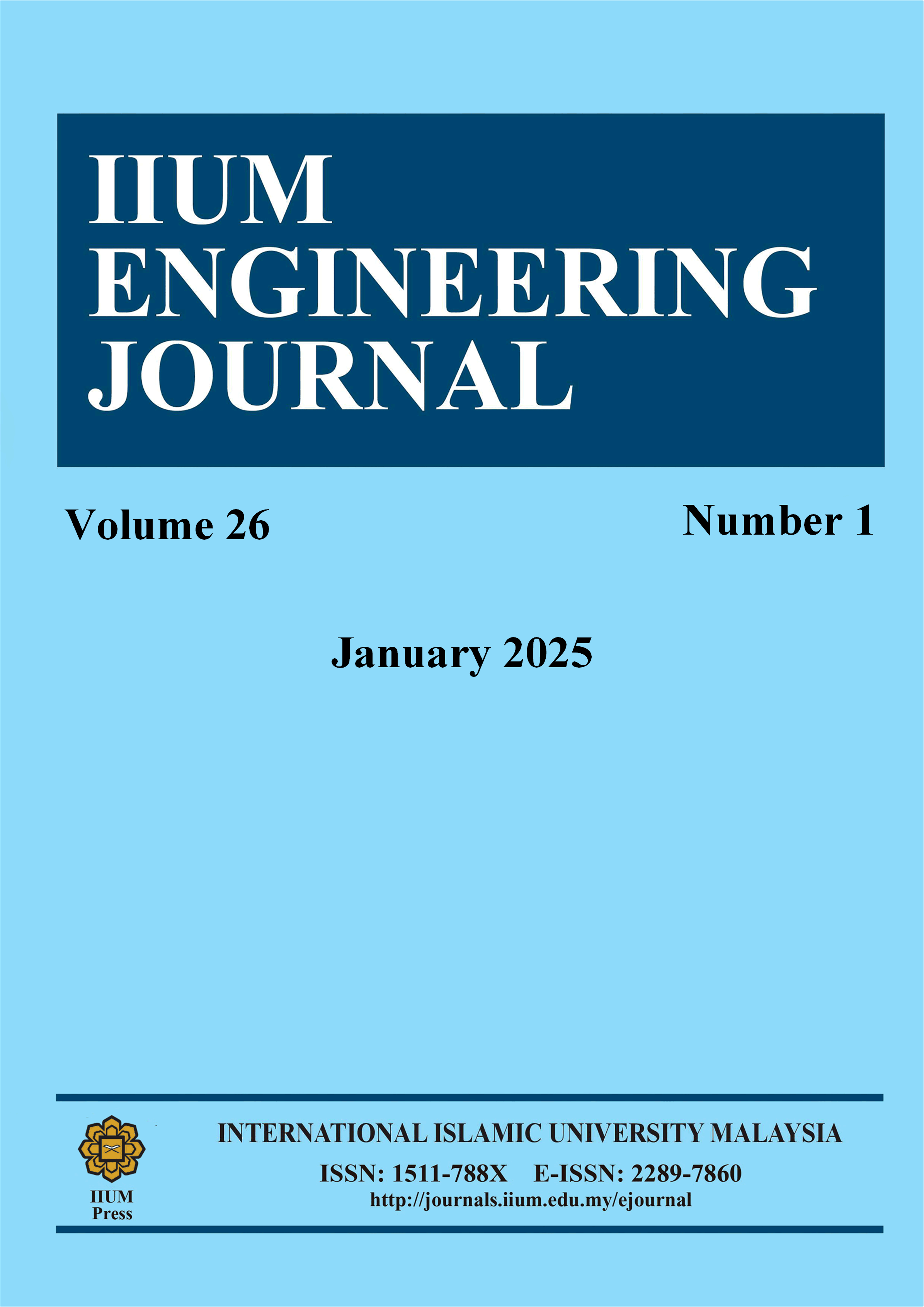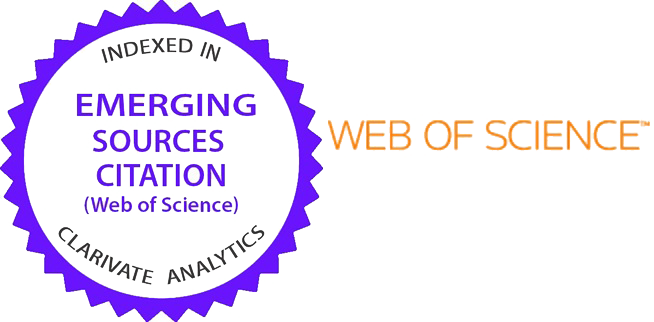Autoencoder Artificial Neural Network Model for Air Pollution Index Prediction
DOI:
https://doi.org/10.31436/iiumej.v26i1.2818Keywords:
Air pollution index, Shallow sparse autoencoder, Deep sparse autoencoder, PredictionAbstract
Air pollution, a significant global challenge driven by industrialization, urbanization, and population growth, is caused by the emission of harmful gases, particulates, and biological molecules into the atmosphere, posing serious risks to health and the environment. Key sources include power plants, industrial activities, vehicles, and residential heating. Thus, effective air quality monitoring and forecasting are crucial to mitigating the adverse impacts of pollution. This paper presents shallow and deep sparse autoencoder artificial neural network models to improve the prediction of the Air Pollution Index (API) in Perak Darul Ridzuan, Malaysia, as a case study. The results show that the deep sparse autoencoder achieves better prediction accuracy with and values of 0.1474 and 0.8331, respectively, compared to 0.1515 and 0.8300 for the shallow sparse autoencoder. The performance of these autoencoder models is also compared with other models, such as feedforward artificial neural networks (FANN) and principal component analysis (PCA). The findings confirm that both autoencoder models enhance API prediction accuracy, with the deep sparse autoencoder emerging as the optimal model, highlighting the potential of deep learning in improving air quality prediction.
ABSTRAK: Pencemaran udara, merupakan satu cabaran global yang didorong oleh perindustrian, urbanisasi pesat, dan pertumbuhan populasi, adalah disebabkan oleh pelepasan gas, partikel, dan molekul biologi merbahaya ke atmosfera, menimbulkan risiko serius kepada kesihatan dan alam sekitar. Sumber utama termasuk loji janakuasa, aktiviti industri, kenderaan, dan pemanasan kediaman. Oleh itu pemantauan dan ramalan kualiti udara penting bagi mengurangkan kesan buruk pencemaran. Kajian ini membentangkan model rangkaian neural tiruan pengauto kod jarang ‘cetek’ dan pengauto kod jarang ‘dalam’ memperbaiki ramalan Indeks Pencemaran Udara (API) di negeri Perak Darul Ridzuan, Malaysia sebagai kes kajian. Dapatan kajian menunjukkan bahawa pengautokod jarang ‘dalam’ mencapai ketepatan ramalan lebih baik, dengan nilai MSE dan R2 masing-masing sebanyak 0.1474 dan 0.8331, berbanding 0.1515 dan 0.8300 bagi pengautokod jarang ‘cetek’. Prestasi model pengautokod ini juga dibandingkan dengan model lain, seperti rangkaian neural tiruan suapan hadapan (FANN) dan analisis komponen utama (PCA). Hasil kajian mengesahkan bahawa kedua-dua model pengautokod meningkatkan ketepatan ramalan API, dengan pengautokod jarang ‘dalam’ muncul sebagai model paling optimum, menonjolkan potensi pembelajaran mendalam ‘dalam’ meningkatkan ramalan kualiti udara.
Downloads
Metrics
References
Li X, Peng L, Yao X, Cui S, Hu Y, You C, Chi T (2017) Long short-term memory neural network for air pollutant concentration predictions: Method development and evaluation. Environmental Pollution 231:997-1004. https://doi.org/10.1016/j.envpol.2017.08.114 DOI: https://doi.org/10.1016/j.envpol.2017.08.114
Box GEP, Jenkins GM, Reinsel GC, Ljung GM (2015) Time series analysis: Forecasting and control, 5th edn. Wiley, Hoboken.
Li C, Hsu NC, Tsay S-C (2011) A study on the potential applications of satellite data in air quality monitoring and forecasting. Atmospheric Environment 45:3663-3675. https://doi.org/10.1016/j.atmosenv.2011.04.032 DOI: https://doi.org/10.1016/j.atmosenv.2011.04.032
García Nieto PJ, Combarro EF, del Coz Díaz JJ, Montañés E (2013) A SVM-based regression model to study the air quality at local scale in Oviedo urban area (Northern Spain): A case study. Applied Mathematics and Computation 219(17):8923-8937. https://doi.org/10.1016/j.amc.2013.03.018. DOI: https://doi.org/10.1016/j.amc.2013.03.018
McClelland JL, Rumelhart DE (1986) A distributed model of human learning and memory. In: McClelland JL, Rumelhart DE, the PDP Research Group (eds) Parallel distributed processing: Explorations in the microstructure of cognition, Vol 2: Psychological and biological models. MIT Press, Cambridge, 170-215. DOI: https://doi.org/10.7551/mitpress/5237.001.0001
Anderson JA, Silverstein JW, Ritz SA, Jones RS (1977) Distinctive features, categorical perception, and probability learning: Some applications of a neural model. Psychological Review 84(5):413-451. https://doi.org/10.1037/0033-295X.84.5.413 DOI: https://doi.org/10.1037//0033-295X.84.5.413
Kohonen T (1977) Associative memory: A system-theoretical approach. Springer-Verlag, New York. DOI: https://doi.org/10.1007/978-3-642-96384-1
Rumelhart DE, Hinton GE, Williams RJ (1986) Learning internal representations by error propagation. In: Rumelhart DE, McClelland JL (eds) Parallel distributed processing: Explorations in the microstructure of cognition, Vol 1: Foundations. MIT Press, Cambridge, 318-362.
Rumelhart DE, Durbin R, Golden R, Chauvin Y (1996) Backpropagation: The basic theory. In: Smolensky P, Mozer MC, Rumelhart DE (eds) Mathematical perspectives on neural networks. Lawrence Erlbaum Associates, Mahwah, 533-566.
Rumelhart DE (1989) Toward a microstructural account of human reasoning. In: Vosniadou S, Ortony A (eds) Similarity and analogical reasoning. Cambridge University Press, New York, 298-312. DOI: https://doi.org/10.1017/CBO9780511529863.014
Baldi P, Hornik K (1989) Neural networks and principal component analysis: Learning from examples without local minima. Neural Networks 2:53-58. https://doi.org/10.1016/0893-6080(89)90014-2. DOI: https://doi.org/10.1016/0893-6080(89)90014-2
Pathirage CSN, Li J, Li L, Hao H, Liu W (2018) Application of deep autoencoder model for structural condition monitoring. Journal of Systems Engineering and Electronics 29(4):873-880. https://doi.org/10.21629/JSEE.2018.04.22. DOI: https://doi.org/10.21629/JSEE.2018.04.22
Miao X, Miao H, Jia Y, Guo Y (2018) Using a stacked-autoencoder neural network model to estimate sea state bias for a radar altimeter. PLoS ONE 13(12): e0208989. https://doi.org/10.1371/journal.pone.0208989. DOI: https://doi.org/10.1371/journal.pone.0208989
Liu JNK, Hu Y, He Y, Chan PW, Lai L (2015) Deep neural network modeling for big data weather forecasting. In: Pedrycz W, Chen S-M (eds) Information granularity, big data, and computational intelligence. Springer, Heidelberg, 389-408. DOI: https://doi.org/10.1007/978-3-319-08254-7_19
Rahim NA, Ahmad Z (2017) Graphical user interface application in Matlab environment for water and air quality process monitoring. Chemical Engineering Transactions 56:97-102. https://doi.org/10.3303/CET1756017.
Ahmad Z, Rahim NA, Bahadori A, Zhang J (2017) Air pollution index prediction using multiple neural networks. International Islamic University Malaysia Engineering Journal 18(1):1-12. https://doi.org/10.31436/iiumej.v18i1.684 DOI: https://doi.org/10.31436/iiumej.v18i1.684
Azid A, Juahir H, Latif MT, Zain SM, Osman MR (2013) Feed-forward artificial neural network model for air pollutant index prediction in the southern region of Peninsular Malaysia. Journal of Environmental Protection 4:1-10. https://doi.org/10.4236/jep.2013.412A1001 DOI: https://doi.org/10.4236/jep.2013.412A001
McLoone S, Irwin GW (2001) Improving neural network training solutions using regularisation. Neurocomputing 37(1-4):71-90. https://doi.org/10.1016/S0925-2312(00)00314-3. DOI: https://doi.org/10.1016/S0925-2312(00)00314-3
Department of Environment, Malaysia (2012) Malaysia environmental quality report 2012. Enviro Knowledge Management Center (EKMC). https://enviro2.doe.gov.my/ekmc/digital-content/86803/. Accessed 2 January 2021.
Xu G, Fang W (2016) Shape retrieval using deep autoencoder learning representation. In: Proceedings of the 13th international computer conference on wavelet active media technology and information processing (ICCWAMTIP),227-230. Institute of Electrical and Electronics Engineers. https://doi.org/10.1109/ICCWAMTIP.2016.8079843 DOI: https://doi.org/10.1109/ICCWAMTIP.2016.8079843
Vincent P, Larochelle H, Lajoie I, Bengio Y, Manzagol P-A (2010) Stacked denoising autoencoders: Learning useful representations in a deep network with a local denoising criterion. Journal of Machine Learning Research 11:3371-3408.
Olshausen BA, Field DJ (1997) Sparse coding with an overcomplete basis set: A strategy employed by V1?. Vision Research 37(23):3311-3325. https://doi.org/10.1016/S0042-6989(97)00169-7. DOI: https://doi.org/10.1016/S0042-6989(97)00169-7
Pathirage CSN, Li J, Li L, Hao H, Liu W, Wang R (2019) Development and application of a deep learning-based sparse autoencoder framework for structural damage identification. Structural Health Monitoring 18(1):103-122. https://doi.org/10.1177/1475921718800363. DOI: https://doi.org/10.1177/1475921718800363
Drucker H, Schapire R, Simard P (1993) Improving performance in neural networks using a boosting algorithm. In: Hanson SJ, Cowan JD, Giles CL (eds) Advances in neural information processing systems 5. Morgan Kaufmann Publishers, San Francisco, 42-49.
Kambhatla N, Leen TK (1997) Dimension reduction by local principal component analysis. Neural Computation 9:1493-1516. https://doi.org/10.1162/neco.1997.9.7.1493 DOI: https://doi.org/10.1162/neco.1997.9.7.1493
Tenenbaum JB, de Silva V, Langford JC (2000) A global geometric framework for nonlinear dimensionality reduction. Science 290(5500):2319-2323. https://doi.org/10.1126/science.290.5500.2319 DOI: https://doi.org/10.1126/science.290.5500.2319
Hinton GE, Salakhutdinov RR (2006) Reducing the dimensionality of data with neural networks. Science 313(5786):504-507. https://doi.org/10.1126/science.1127647. DOI: https://doi.org/10.1126/science.1127647
Hinton GE, Osindero S, Teh Y-W (2006) A fast learning algorithm for deep belief nets. Neural Computation 18(7):1527-1554. https://doi.org/10.1162/neco.2006.18.7.1527 DOI: https://doi.org/10.1162/neco.2006.18.7.1527
Bengio Y, Lamblin P, Popovici D, Larochelle H (2007) Greedy layer-wise training of deep networks. In: Schölkopf B, Platt J, Hofmann T (eds) Advances in neural information processing systems 19. MIT Press, Cambridge, 153-160. DOI: https://doi.org/10.7551/mitpress/7503.003.0024
Downloads
Published
How to Cite
Issue
Section
License
Copyright (c) 2025 IIUM Press

This work is licensed under a Creative Commons Attribution-NonCommercial 4.0 International License.
Funding data
-
Kementerian Pendidikan Malaysia
Grant numbers FRGS/1/2018/TK02/USM/02/10






















